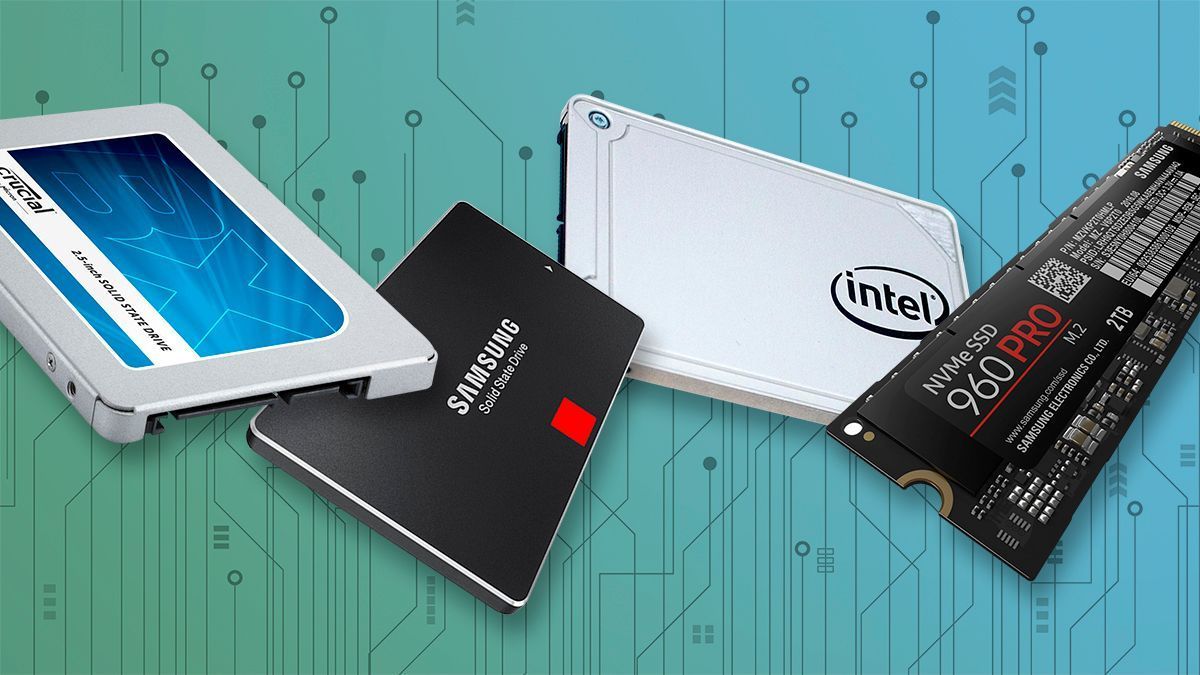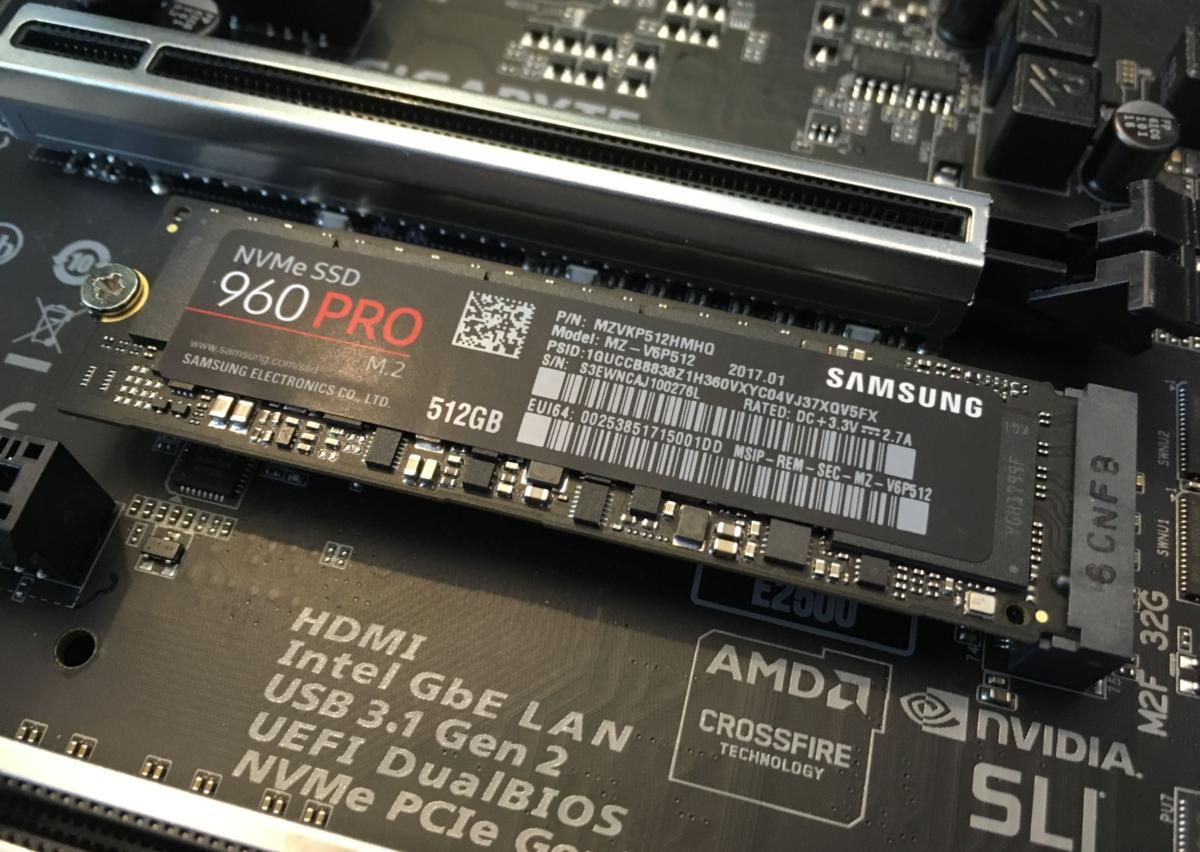The best SSDs of 2018
The best SSDs can supercharge your PC. Here are our picks for the best SSDs, what to look for in an SSD, whether you even need an SSD, and more.
 Rob Schultz/IDG
Rob Schultz/IDG
- Best SSD for most people
- Best budget SSD
- Best NVMe SSD
- Best budget NVMe SSD
- Fastest SSD
- NVMe SSD setup: What you need to know
- What to look for in an SSD
- Buyer beware: TLC vs MLC vs SLC SSDs
- SSDs vs. hard drives
- Best SSDs: Our reviews
Switching to a solid-state drive is the best upgrade you can make for your PC. These wondrous devices obliterate long boot times, speed up how fast your programs and games load, and generally makes your computer feel fast. But not all solid-state drives are created equal. The best SSDs offer solid performance at affordable prices—or, if price is no object, face-meltingly fast read and write speeds.
This article was last updated on March 1, 2018 to name the Samsung 860 EVO as the best SSD for most people.
Many SSDs come in a 2.5-inch form factor and communicate with PCs via the same SATA ports used by traditional hard drives. But out on the bleeding-edge of NVMe (Non-Volatile Memory Express) drives, you’ll find tiny “gumstick” SSDs that fit in M.2 connections on modern motherboards, SSDs that sit on a PCIe adapter and slot into your motherboard like a graphics card or sound card, futuristic 3D Xpoint drives, and more. Picking the perfect SSD isn’t as simple as it used to be.
That’s where this guide comes in. We’ve tested numerous drives to find the best SSDs for any use case. Let’s take a look at PCWorld’s top picks, and then dive into what to look for in an SSD. Quick note: This roundup only covers internal solid-state drives. Check out PCWorld’s guide to the best external drives if you’re looking for a portable storage solution.
Best SSD for most people
The Samsung 850 EVO served as our go-to SSD recommendation ever since it debuted in 2014, but after a long reign at the top, the company replaced the legendary drive with the Samsung 860 EVO in 2018. The replacement isn’t quite as revolutionary as its predecessor but nevertheless claims the throne as the best SSD for most people.
The Samsung 860 EVO isn’t the fastest SSD you can buy—that honor goes to advanced drives that transfer data over PCI-E rather than the traditional SATA interface—but it’s the fastest triple-layer cell (TLC) SATA drive we’ve tested, albeit by a small margin. More importantly, it’s solved the slow write performance plaguing many other SSDs that use TLC NAND chips. We copied a whopping 80GB of data in one test and the EVO stayed strong the entire time, rather than bogging down after exceeding its cache.
Costs crept slightly upwards with the new generation of hardware, but the Samsung 860 EVO still offers a compelling blend of price, performance, and capacity that few SSDs can match, backed by a long five-year warranty and Samsung’s superb Magician SSD software for easy-peasy drive installation and maintenance. And as a 2.5-inch SATA-based drive, the Samsung 860 EVO should have no problems slipping into most desktops or laptops, unlike exotic M.2 and PCIe SSDs. (The drive is also available in the M.2 form factor however.)
The 500GB Samsung 850 EVO ($170 on Amazon) is probably the best option for most people, but it’s also available in 250GB, 1TB, 2TB, and 4TB models. Prices for SSDs start to get staggering once you hit 1TB or more of capacity, though. Most people would be better off buying the 500GB version and pairing it (if need be) with a high-capacity traditional hard drive like the Western Digital Blue lineup ($50 for 1TB on Amazon).
But other SSDs are challenging the Samsung 860 EVO. The Sandisk Ultra 3D ($150 for 500GB on Amazon) and Intel SSD 545s ($180 for 500GB on Newegg) are two other good options. The Sandisk Ultra 3D’s three-year warranty lags behind the five-year warranty of the Samsung and Newegg drives, though. The WD Blue 3D NAND SATA SSD ($155 on Amazon) is essentially the same SSD as the Sandisk Ultra 3D, but sold with a different label and in another form factor (M.2).
Samsung also offers the Samsung 860 Pro, but the Samsung 860 EVO is nearly as fast. The only reason to opt for the Pro model is if you you’re concerned about longevity or write far more data daily than the average user, as it offers a best-in-class endurance rating. You pay for the peace of mind, though. A 256GB model costs $140 on Newegg, while a 512GB model sells for $250. You’ll also find 1TB, 2TB, and 4TB Samsung 860 Pro drives available—the latter for a staggering $1,900. (Plus $1.99 shipping.)
Best budget SSD
If you’re looking for a solid, easy-to-install SATA SSD but don’t want to spend a lot of money, check out the Crucial BX300. It’s one of the fastest budget-friendly drives we’ve tested.
Many cheap SSDs use triple-level cell (TLC) NAND chips that can peter out on the performance front when you’re transferring a lot of files and exceed the drive’s cache. (More on that in the buying guide section.) The Crucial BX300 uses multi-level cell (MLC) NAND that sidesteps the issue, so it delivers consistent transfer speeds even when you’ve moving over large batches of files. The three-year warranty isn’t great, but it isn’t bad either.
The price is certainly right though, especially if you’re planning to pair your SSD with a mechanical hard drive. On Amazon, you can grab a 120GB model for just $60 and a 240GB model for $80. There’s also a 480GB BX300 for $145, but in that price range, consider a Samsung 860 EVO or SanDisk Ultra 3D instead.
Best NVMe SSD
If performance is paramount, the Samsung 960 Pro is the best NVMe SSD you can buy. This drive is ludicrously fast, roaring past SATA-based SSDs in sustained read/write tests, and it’s available in up to 2TB of capacity ($1,025 on Amazon)—a rarity for a top-end NVMe SSD, albeit an expensive one. If your pockets aren’t quite that deep, 1TB ($587 on Amazon) and 512GB ($290 on Amazon) models are also available. Samsung supports the 960 Pro with its excellent Magician SSD management software and a lengthy five-year warranty.
Best budget NVMe SSD
NVMe drives are finally starting to go mainstream, and for the first time we feel comfortable recommending a budget NVMe SSD.
The Intel 760P SSD almost matches the prices of SATA-based drives, with a 128GB model selling for $73 on Newegg, a 256GB model for $109, and a 512GB model for $200. Even better, the drive turns in almost chart-topping read speeds and write speeds that exceed even the fastest SATA drives. That said, it has a noticeable flaw, though it’s not one that will affect many people often. If you’re writing or copying a large amount of data and exceed the Intel 760P’s 6GB cache, write speeds plummet. It only disappoints relative to pricier NVMe drives though; this budget NVMe’s worst speeds are still 100MBps faster than the speediest SATA drives.
Be sure to read PCWorld’s Intel 760P SSD review though, as each model of the drive offers different performance as well. We tested the 512GB version. And if you’re concerned about the 760P’s performance but still don’t want to break the bank for an NVMe SSD, check out the Plextor M9Pe, which leaves Intel’s drive in the dust while writing large amounts of data. At $221 for a 512GB version, it’s a decent bit more expensive than the Intel 760P, though it’s still much more affordable than the vast majority of NVMe SSDs. You won’t go wrong with either of these drives.
Fastest SSD
If performance is paramount and price is no object, Intel’s Optane SSD 900P is the best SSD you can buy, full stop. The drive doesn’t use traditional NAND technology like other SSDs; instead, it’s built around the futuristic 3D Xpoint technology developed by Micron and Intel. Hit that link if you want a tech deep-dive, but in practical terms, the Optane SSD 900P absolutely plows through our storage benchmarks and carries a ridiculous 8,750TBW (terabytes written) rating, compared to the roughly 200TBW offered by many NAND SSDs. If that holds true, this blazing-fast drive is basically immortal—and it looks damned good, too.
But you pay for the privilege of bleeding edge performance. Intel’s Optane SSD 900P costs $390 for a 280GB version and $600 for a 480GB model. That’s significantly more expensive than even NVMe SSDs—and like those, the benefits of Intel’s SSD will be most obvious to people who move large amounts of data around regularly. And the Optane SSD 900P actually uses the NVMe protocol to communicate with your PC, so you’ll need to meet some additional criteria to be able to boot from it—which we’ll cover next.
Fortunately, a more mainstream drive is coming. Intel revealed the Optane 800P SSD at CES 2018. This version will ship as a standard, bootable M.2 gumstick in 58GB and 118GB capacities. With those capacities, you’ll probably want to pair it with a secondary drive for mass storage. Look for the Optane 800P SSD to launch in the first quarter of the year.
NVMe SSD setup: What you need to know
Be aware of what NVMe drives deliver before you buy in. Standard SATA SSDs already supercharge boot times and loading times for PCs, and for a whole lot cheaper. You’ll get the most use from NVMe drives, be it in a M.2 form factor like the Samsung 960 Pro or a PCIe drive, if you routinely transfer data, especially in large amounts. If you don’t do that, NVMe drives aren’t worth the price premium.
If you decide to buy an NVMe SSD, make sure your PC can handle it. This is a relatively new technology, so you’ll only be able to find M.2 connections motherboards from the past few years. Think AMD Ryzen and mainstream Intel chips from the Skylake era onward, for the most part. NVMe SSDs that were mounted on PCIe adapters were popular in the technology’s early years, before M.2 adoption spread, but they’re rarer now. Make sure you’re actually able to use an NVMe SSD before you buy one, and be aware that you’ll need 4 PCIe lanes available in order to use it.
 Brad Chacos
Brad Chacos
The Samsung 960 Pro NVMe SSD in an M.2 slot.
To get the most out of an NVMe drive, you want to run your operating system on it, so you must have a system that recognizes the drive and can boot from it. PCs purchased during the past year or two should have no problem booting from an NVMe drive, but support for that can be iffy in older motherboards. Do a Google search for your motherboard and see if it supports booting from NVMe. You may need to install a BIOS update for your board. If your hardware can’t boot from an NVMe SSD, your machine should still be able to use it as a secondary drive.
What to look for in an SSD
Capacity and price are important, of course, and a long warranty can alleviate fears of premature data death. Most SSD manufacturers offer a three-year warranty, and some nicer models are guaranteed for five years. But unlike the olden days of SSDs, modern drives won’t wear out with normal consumer usage, as Tech Report tested and proved years ago with a grueling endurance test.
The biggest thing to watch out for is the technology used to connect the SSD to your PC.










